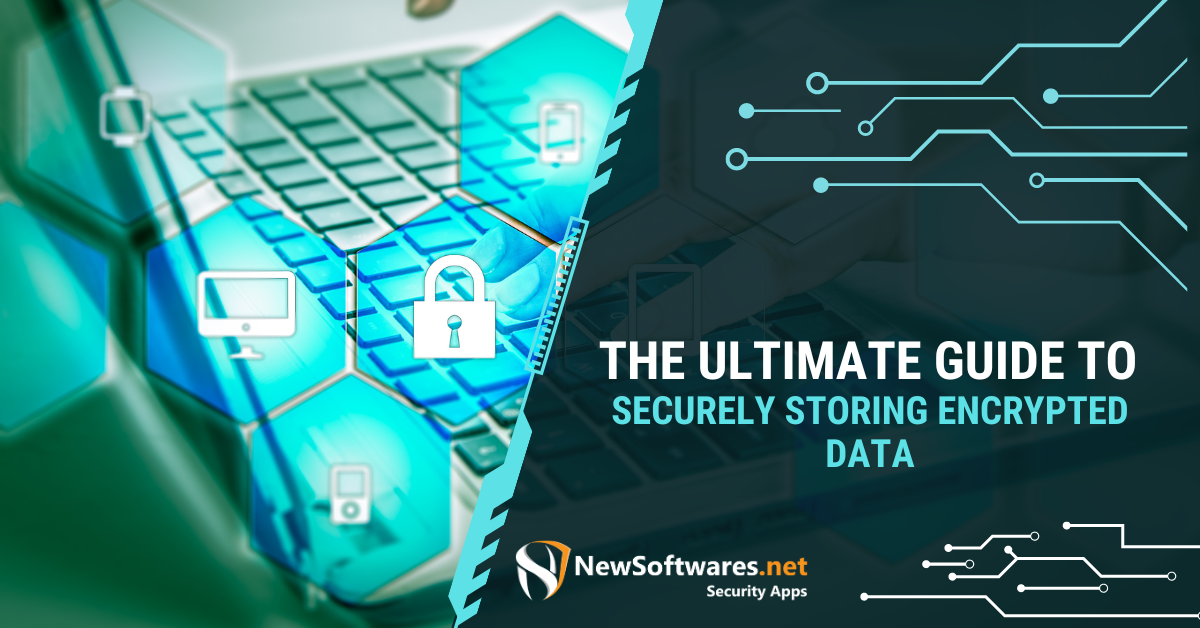In an age where digital data permeates every facet of daily life, the imperative to secure sensitive information has never been higher. With cyber threats proliferating at an alarming rate, understanding the best ways to store encrypted data safely becomes not only prudent but essential. This article meticulously delineates various methods, technologies, and principles to fortify the sanctity of encrypted information while giving rise to a profound appreciation for the art of cryptography itself.
1. Implement Robust Encryption Techniques
The first step in securing encrypted data is to select an encryption algorithm that boasts proven efficacy against contemporary hacking techniques. Advanced Encryption Standard (AES) is widely regarded as the gold standard due to its resilience and efficiency. Employing a key size of at least 256 bits enhances the cryptographic fortitude. Yet, the mere selection of a robust algorithm is insufficient; one must also meticulously manage the encryption keys. Using a Key Management System (KMS) may provide added layers of security, ensuring that keys are stored away from the encrypted data itself.
2. Use Hardware Security Modules (HSMs)
Hardware Security Modules represent the apex of physical security for data encryption keys. These dedicated devices create, manage, and store cryptographic keys, all while providing tamper-resistant environments. Utilizing HSMs mitigates the risk of key exposure, whether via hacking attempts, insider threats, or mishandling by end-users. Additionally, HSMs comply with rigorous industry standards, assuring users of their integrity and reliability.
3. Segregate Data Storage
Data segregation is paramount in minimizing risk exposure. Sensitive information should be stored in separate locations, preferably using a multi-tiered architecture. For instance, utilizing a combination of on-premises and cloud storage can create a barrier against total data loss. Data stored in the cloud should be encrypted before it even leaves the local environment, thereby maintaining control over the encryption process.
4. Employ Regular Auditing and Monitoring
Establishing a regimen of periodic audits and monitoring can help in identifying potential vulnerabilities that might otherwise go unnoticed. Utilizing logging tools to track access to encrypted data allows organizations to scrutinize interactions down to the individual user level. By analyzing patterns, one can detect unauthorized access attempts, alerting administrators to potential breaches before they escalate into full-fledged incidents.
5. Use Strong Authentications Methods
Access to encrypted data must be stringently controlled. Implementing multifactor authentication (MFA) can substantially fortify the gatekeeping process. By requiring two or more verification methods, digital doors become exponentially more challenging for unauthorized individuals to breach. Whether employing biometric checks, one-time codes, or authentication apps, multifactor systems provide a crucial buffer against unauthorized access.
6. Utilize Secure Cloud Storage Solutions
As organizations increasingly migrate to cloud-based infrastructures, it is essential to choose secure cloud storage solutions. Providers that offer end-to-end encryption should be prioritized, as they ensure that data is encrypted during transmission and while at rest. Additionally, scrutinizing the provider’s compliance with industry regulations can help ascertain their commitment to security best practices. Reviewing Service Level Agreements (SLAs) for clear data privacy clauses can further reinforce trust in cloud storage solutions.
7. Data Anonymization and Tokenization
Data anonymization and tokenization are efficacious techniques for reducing the risk associated with data exposure. Anonymization obfuscates personal information, making it difficult to trace data back to its source. Tokenization replaces sensitive data with non-sensitive tokens that retain essential information without compromising security. By deploying these strategies, organizations can safeguard sensitive data even if breaches occur.
8. Regular Data Backups
Data loss can occur due to various factors ranging from accidental deletion to catastrophic cyberattacks. Ensuring that regular data backups are encrypted and stored securely can serve as a lifeline. Both on-site and off-site backups are important, as redundancy is a key principle of data protection. When creating backups, utilizing incremental backups can save storage space and reduce bandwidth usage while also ensuring recent data remains retrievable.
9. End-User Training and Awareness
Human error remains one of the most significant vulnerabilities for any security framework. Training end-users to recognize phishing attempts, manage passwords diligently, and understand the importance of not sharing access credentials can create a more security-conscious culture within an organization. Regular training sessions, combined with simulated security scenarios, can prepare staff to handle potential threats effectively.
10. Establish a Data Breach Response Plan
No amount of preventative measures is foolproof; hence, organizations must formulate a detailed data breach response plan. This plan should delineate roles, responsibilities, and protocols to follow should a breach occur. Regularly testing the plan through drills can ensure readiness, helping teams respond swiftly and efficiently in the event of an actual incident.
Storing encrypted data safely is not merely a technical challenge but a strategic imperative that requires ongoing vigilance, sound practices, and proactive measures. The intricacies of establishing a secure environment reveal a deeper fascination with cryptography and the art of safeguarding information in an increasingly perilous digital landscape. As we navigate this dynamic arena, the methodologies outlined above serve as safeguards, securing not just data but the trust of individuals and organizations alike.








Leave a Comment